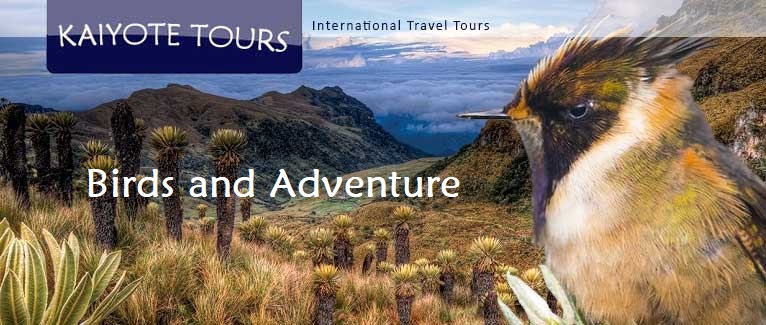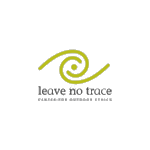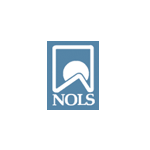Andes Birding Tours Colombia Bogota Monserrate Trips

If you are interested in the Andes Birding Tours Colombia Bogota Monserrate Trips, come and join us at Kaiyote Tours!
Birding the Andes, Bogota and Monserrate
Colombia is fascinating. From the deep blue Pacific Ocean and the crystal-clear Caribbean Sea to the Andean Mountain peaks rising to 18,700 feet and back down to the Amazon Basin; Colombia is stunning and a true adventure to explore.
The largest paramo in the world is in Colombia. A paramo is a very unique alpine habitat, characterized as a treeless high-altitude area in the tropic zone. Paramos usually have many endemic species because evolution seems to happen quickly in these areas. On our Colombia tour in December, one of our very favorite Colombian Paramo endemics that we will see is the Buffy Helmetcrest, which is a type of Hummingbird. This is the bird that is pictured in the heading above and the landscape in the photo is of Los Nevados National Natural Park, which we will visit on the tour.
This trip starts in Bogotá and then we head to the high mountains of the eastern, central, and western Andes and then back to the Bogotá Valley. We will visit the world’s largest Paramo, with wondrous high altitude landscapes. There are about 1,850 species of birds that travel through Colombia and 73 endemics.
We expect to see 350 - 400 different species of birds on this trip. This is a great tour to get a true feel of the country of Colombia.
Printable Bird List
(This is a checklist of the birds that we have seen on this trip)
- **Travel Dates:
- March 15 - 27, 2027, spots left = 6
- Additional dates by request
- Group Size: 6 Travelers plus guides
- Trip Length: 13 days
- Rates: Rate per person = $4,750 ($900 charge for single occupancy)
- Rates include: Domestic transfers, lodging, breakfast, lunch, dinner, scheduled group tours, park entrance fees and basic travel insurance.
- Not included: International airfare, customs & immigration fees and visas, alcohol, trip cancellation insurance.
- Adventure level: Moderate, please check the “Welcome” page for definition
- Reservations: To reserve a spot on the trip, a non-refundable $800 per person deposit is required, and the non-refundable balance is due six months prior to the trip.
** For this tour there is a 6-day extension called the "Agami Heron Trail" . Price is $2,105 per person for double occupancy. Please contact us for details.
Please note: This tour visits high-altitude locations in the Colombian Andes.
Special Option: If you would like a longer trip, you can sign up for multiple back-back Colombia trips and you will see 450 - 500 different species of birds.
Special offer: Included with your trip (one per room) is a copy of the field guide “An Illustrated Field Guide to the Birds of Colombia” by Fernando Ayerbe Quinones. You will receive this when you reserve your trip so you will have time to study and know the beautiful birds of Colombia.
Map of the travel route here: Colombia Andes (opens new page)
Basic Itinerary
Day 1: Arrival in Bogotá
Upon arrival at the El Dorado International Airport in Bogotá (BOG), you will be met at the airport and it is about a 30 minute drive to the Hotel Casa Deco where we will spend 2-nights.
Day 2: Bogotá
Today will be a chance to get to know the city of Bogotá. There will be a historical walking tour of La Candelaria and the local neighborhood. Bogotá is at an elevation of 8,300 feet and atop the mountain overlooking the city is the Monserrate church and mountain park at a summit of over 10,300 feet. There is both a funicular and tramway that goes to the top, as well as a hiking trail. Not only are views of the city fantastic from this location, but is also a great birding area for hummingbirds, raptors, and mountains birds. The weather can vary magically from sunny to rainy many times a day and is not a surprise to see the fog coming down the mountain as well.
Day 3: La Vega
Located near the airport is Florida Park. This small natural area is a perfect spot to find the endemic Bogota Rail. Other interesting species to be found include endemic Apolinar's Wren, a fairly common bird of tall cattails. The endemic subspecies of the Yellow-hooded Blackbirds are normally present and conspicuous, but Noble Snipe and Subtropical Doradito are rather rare and more difficult to see. Small numbers of Spot-flanked Gallinule are usually present in open water and also to be seen is the Silvery-throated Spinetail and Rufous-browed Conebill, Band-tailed Seedeater, Lesser Scaup, Andean Siskin, Andean Teal, Black Flowerpiercer, as well as many other birds. We will spend the morning at this park and in the afternoon start heading up the mountains to the town of La Vega. It is a 2-hour drive to the municipality of San Francisco where the Enchanted Garden is located. The Enchanted Garden is a private residence located at an altitude of 5,000 feet. Some 300 hummingbirds can be seen at any moment coming to the 40 plus feeders present in the garden. 27 different hummingbird species have been recorded here including the unique and highly regarded Indigo-capped Hummingbird and both Red-billed and Short-tailed Emeralds. And there are other birds there besides hummingbirds. Lodging for the night at the La Finestra Hotel near the town of La Vega.
Day 4: Honda
Just up the road from La Vega is La Laguna el Tabacal and we will be spending the morning in this area for birding and later in the day head to the town of Honda; about a 2-hour drive. Just outside of Honda is a wonderful lake and wetland and we will spend the afternoon and early evening boating and birding. This birding area is part of the Madre Vieja Slough. There are so many birds here that that is difficult to see and write them down fast enough without missing a few. Honda is located in the beautiful Magdalena River Valley that divides the Eastern and the Central Andes Cordillera. The area offers great birding along the river and slough habitats. A few of our favorites: Northern Screamer, Black-faced Dacnis, Sooty Ant-Tanager, White-mantled Barbet, White-bibbed Manakin and Black-capped Donacobius. Lodging will be at a hotel in Honda. We usually get here in the late afternoon and stay for sunset. We have several small boats that take us across the water, and we see a lot of birds. As we paddle back as the sunset, hundreds of nightjars and other birds are flying; some are heading to roost and others are just awaking for the evening. It is always an amazing experience. By the time we get back to the pier, it is dark and we are paddling by flashlight. What an experience! We will stay for one night at the El Virrey Hotel.
Day 5: Manizales
After a morning of birding at "La Charco de Guarinocito", which is a beautiful wetland and forested area, we will head to Manizales. From Honda it is a 3-hour to the Hotel Estelar Recinto Del Pensamiento (Stellar Precinct of Thought), where we will spend 2-nights.
Day 6: Manizales
We will spend the day birding the Hacienda del Bosque area. This area is a designated bird reserve, with great accommodations and great food. This family owned farm and reserved, has been protected for more than 40 years, which has allowed for a great number of birds to reside. Altitude of 9,00 - 12,000 feet. This range of altitude bring in a variety of birds.
Day 7: Los Nevados National Park
From our lodge, it is a 3-hour drive to the foothills of Los Nevados National Park at Paramo del Ruiz. Termales del Ruiz is a hotel located at the highest point of the tour at around 11,480 feet with stunning views of the valleys and mountains of the paramo. The hotel has great feeders for viewing and photographing birds. Eight volcanoes can be found within Los Nevados, including Nevado del Ruiz, looming 17,400 feet above sea level. There is a set of gardens that will attract 10 species of Hummingbirds that regularly come and visit the feeders set up in the main garden including the highly regarded Black-thighed Puffleg, Golden-breasted Puffleg, Sword-billed Hummingbird, Buff-winged Starfrontlet and the Viridian Metaltail. We will spend one night at the hotel Termales del Ruiz
Day 8: Tinamú
Today we will travel to higher elevations of Nevado del Ruiz National Park at near 13,000 feet in search for the dazzling and very localized Buffy Helmetcrest; a plump little hummingbird that feeds on a few species of flowering plants that bloom at different times of the year. The Buffy Helmetcrest has a population estimate of less than 1000 individuals, found almost entirely within Los Nevados and the surrounding area. Many other birds reside at the paramo life zone with a mix of unique species including Black-chested Buzzard-eagle, Andean Condor, Paramo Seedeater, Noble Snipe and the Black Flowerpiercer. In the forest patches you’ll find the amazing Paramo Tapaculo, Buff-breasted Mountain-Tanager, Ash-colored Tapaculo, Andean Pygmy-owl and Mountain Avocetbill. In the afternoon we will drive about 1-hour to a bird reserve outside the city of Manizales, where we will spend 2-nights at the Tinamú Reserve.
Day 9: Tinamú
We will spend the day birding the trails and roads at Tinamú. Tinamú has many feeders for great bird viewing and photography. Tinamú is usually everyone's favorite place. The rooms, the food and the locals who work at Tinamu are wonderful. And the long list of birds we see is also wonderful.
Day 10: Pereira
From Tinamú, it is a 1-hour drive to the city of Pereira, which is a city in a mountainous, coffee-growing region of western Colombia known for mild Arabica beans. In the afternoon a visit to Santa Rosa de Cabal which is a small town that has the highest sighting records of the critically endangered Fuertes's Parrot, also known as the Indigo-winged Parrot. Other great birds to see include Mountain Avocetbill, Grey-breasted Mountain Toucan, Black-billed Mountain-Toucan, Ocellated Tapaculo, Hooded-Mountain Tanager, Red-crested Cotinga, Golden-plumed Parakeet and the Speckled-faced Parrot. From Santa Rosa de Cabal, it is a 1-hour drive to La Florida, where we will be staying at a house located on the Otún River. for 2-nights.
Day 11: Otún Quimbaya Nature Reserve
From our house on the river, 1-hour drive to reach the beautiful Otún Quimbaya Nature Reserve, where birding happens mostly along a dirt road in front of the reserve’s main entrance. Species include: Chestnut-crowned Antpitta, Golden-plumed Parakeet, White-throated Quail-Dove, Grass-green and Blue-winged Tanager, White-throated Screech-Owl, Rufous-banded Owl, and Stygian Owl. Otun Quimbaya is well-known as the best site for the endemic, endangered and now very local Cauca Guan, as well as being a great site for Red-ruffed Fruitcrow, Chestnut Wood-Quail, Torrent Duck, Golden-plumed Parakeet, Stiles’s Tapaculo and Grayish Piculet. The birding is along fairly flat trails and a road. The understory is pretty navigable and open, making this a great place to look for Antpittas, Wood-Quails, the Colombia Screech-Owl, Wattled Guans, Black-billed Peppershrike, Whiskered Wren among others. Our favorite birds are the White-capped Dipper and the Andean-Cock-of the-Rock.
Day 12: Bogotá
After a morning of birding in a location that is excellent for viewing the Hooded Antpitta and the endangered Tapir, it is a 1.5-hour drive to the Pereira Airport where we will be taking a 1-hour flight back to Bogotá in the late afternoon. We will spent one or two nights at a hotel close to the airport, depending on whether you are leaving on day 13 or staying for the Agami Tour
Day 13: Fly home or stay for Agami Trail
Today is "fly-day" and you will be shuttled back to the Bogota airport for your flight home, or you will stay another night in Bogota.
Day 14 - 19: Agami Trail
Please contact us for details or click here: Agami Heron Trail











 Follow
Follow

